Enab Baladi’s Investigation Team
Despite the uniqueness of the Kurdish experience in relation to the Syrian matter, the pattern of Kurdish movements, whether political or military, did not differ from the rest of the parties involved in the Syrian conflict. All parties involved had in common the lack of experience and the need to respond to the state of shock triggered by the Syrian revolution. But the Kurdish movements may have gone beyond them all with its alliances which often seemed to be contradicting in order to push their interests forward in a war in which more than one party in the Syrian scene is involved.
What makes the Kurdish situation different is that the political and even military movements were often driven by a narrow ideological framework based on copying the experiences of similar Kurdish parties in neighboring countries. Kurdish alliances were also realized based on “national interest” and not on the “the interest of the nation”.
Accordingly, the Kurds in Syria pursued a wide range of coalitions that could be distributed according to the two poles of Kurdish politics: the Kurdish National Council and the Democratic Union Party, into coalitions at the Kurdish-Kurdish level and others at the national level. Foreign alliances (local and international) were the most influential and prominent in the Kurdish political and military context.
Kurdish alliances…
Too many roads and a single end
More than a month after the beginning the battle of Afrin, led by Turkey with the participation of the Free Army’s members to progress at the expense of the Syrian Democratic Forces, the military wing of the Democratic Union Party, in northern Aleppo, the forces had to bring more than 1,700 fighters from eastern Syria’s fronts, for ISIS affiliates are still trying to move again, with the Syrian regime continuing to advance on the countryside of Deir ez-Zor and Raqqa.
The introduction of Kurdish fighters to Afrin was a necessity that came as a result of US refusal to publicly support the Kurdish fighters in a battle led by Turkey, in addition to the “disappointment” the Kurds felt after the Syrian regime refused to enter Afrin to support Syrian Democratic Forces.
While the Free Army is advancing today on several axes in Afrin area and gradually approaching the predominantly Kurdish city, the Kurds believe themselves to be subjects to an act of “genocide”. The Americans, who used them in the war against ISIS, still refuse to rescue them, and the regime is opening the way for their forces across its territory to an actual “holocaust”.
Perhaps the above picture clearly reflects a long history of disappointments for the Kurds, which explains their continual failure to achieve their nationalist political projects.
Looking back on the political history of the Kurds, it can be said that, as a political movement that is often hostile to the Baath regime, they have faced an austere repression which confined them to the search for citizenship rights. All they have got instead was more concessions that proved the regime’s political maneuvers more successful than the regime thought them to be.
In 1980, Hafez al-Assad attracted the leader of the Kurdistan Workers’ Party (PKK), Abdullah Öcalan, provided him with training bases in order to pressure Turkey into the case of the Euphrates River’s level , while allowing some freedom for party movements and providing Kurds with space to get into parliament later. Abandoning Öcalan and handing him over to Turkey after nearly 20 years in Syria, and returning to confronting the Kurdish parties with more repression, were the price for the redemption of the Turkish-Syrian relationships later.
After the Syrian revolution started, and despite the fact that the internally displaced Kurdish political movement has had a historic opportunity to turn national dreams into reality, several obstacles have arisen before it, and they have most notably shown in the internal fragmentation and the difficulty of forming a unified Kurdish political or military alliance.
The failure of the agreements (Hawler 1, Hawler 2 and Dahuk) has greatly contributed into widening the gap between the Kurdish National Council, which is part of the Syrian political opposition and close to Iraqi Kurdistan, and the Democratic Union Party, the brother of the PKK which is loyal to Iran.
Meanwhile, the alliance with the Syrian opposition was confined to the Kurdish National Council, which later on joined the ranks of the National Coalition for Syrian Revolutionary and Opposition Forces that has other political and regional calculations. The Union party, on the other hand, was forced to engage in turbulent and temporary alliances with opposition parties such as the National Coordination Committee for Democratic Change and Tayar Qamh, led by Haytham Manna, and then Syrian’s Tomorrow Movement, led by Ahmad Jarba.
The United States… The closest ally
Since 2012, the Democratic Union Party has managed to impose its control over the areas of Kurdish concentration in Syria, pushing the Kurdish National Council outside the borders of the Kurdish political map. The party also managed to attract US support for the Syrian Democratic Forces and gave Americans enough room to make use of its fighters and territories that it controls following the principle of “mutual benefit” involving both parties.
The US-led coalition has also established a close military alliance with the Syrian Democratic Forces as part of an internationally-advertized war against the “most dangerous” organization in the world, providing Kurdish fighters with weapons and equipment and air cover for their military operations in addition to expanding their areas of control, which have become in one way or another “the areas of American influence in Syria.”
In spite of all this, the United States has made no effort to improve the image of the Kurds internationally, or to push them to any negotiation platform, whether in Geneva, Astana or Sochi. The United States has also expressed its rejection of any areas of self-administration or semi-autonomous areas in Syria following the declaration of the Democratic Union Party of the establishment of the Federation in the north and north-east of Syria, and expressed its rejection of any federation that has not been achieved after negotiations that include all the Syrian parties.
The regime and Russia… The half ally
Since its formation, the Democratic Union (PYD) has tried to present itself as a “third party,” i.e. “supporting neither the opposition nor regime”. However, over the past five years it has seemed closer to the regime considering the security and economic compromises and coordination and harmonious military movements.
Some of the regime’s institutions are still present in al-Hasakah governorate alongside the self-administration institutions, as well as the members of al-Assad forces and the National Defence Forces, which are deployed in al-Hasakah and Qamishli, without having any clashes with the Syrian Democratic Forces and Asayish. This is in addition to the several national conferences the Ba’ath party has held in al-Hasakah during the past years.
The party does not deny this coordination, Sihanok Dibo, the adviser to the joint presidency of the party, told Enab Baladi during a previous interview that “the way the party is dealing with the institutions in al-Hasakah is part of its desire to safeguard the interests of the population.” He pointed out that Qamishli airport, which is controlled by the Syrian regime, is important for the city.
On the other hand, the “People’s Protection Units” (Kurdish) got engaged in lots of battles, at the military level, with the forces of the “Euphrates Shield” and ISIS. Many of these battles allowed the regime to progress and control new territories, while other areas were handed over to it under official agreements supported by Russia, as was the case in Manbij. The role of the Russians was not confined to coordination between the regime and the units, but rather went beyond that to the deployment of temporary military bases in the city of Afrin, which Moscow used as control points for “de-escalation” agreements and claimed them to be a branch for reconciliation center.
However, despite this fragile alliance, Moscow has never concealed its concerns about the “Syrian Democratic Forces” as a mobile American force. Unusually, Russia and the United States co-asserted the unity of Syrian territories and rejected any self-destructive projects, which would shake that unity. The fragility of this unity manifested itself deeply through the Turkish-Russian rapprochement, which had begun with scarifying and taking off the cover of the Democratic Union Party in the West Euphrates, after it used it to manipulate the Turkish vision and make it fit within the Russian approach to the solution in Syria. Thus, Afrin operation and the withdrawal of Russian bases from the city before the battle were the first direct results for Moscow and Ankara rapprochement at the expense of the Kurds.
Turkey and “Kurdish National Council”.. Transitive relationship
Turkey and the Democratic Union party have a relationship based on mutual hostility. Turkey considers PYD as an extension of the Kurdistan Workers’ Party (PKK), which is included within the Turkish terrorist lists, and supporters of the party believe that Turkey aims to eliminate the Kurds and wage an ethnic cleansing war against them.
The Kurdish National Council, whose offices as well as its political activities are based in Turkey, believes that relationships with neighbors presuppose a certain degree of coordination to achieve mutual interests. The Kurdish National Council policy adopts the approach of the Government of Iraqi Kurdistan region in its rapprochement with Turkey, which contributed to widening the conflict between the Kurdish National Council and the Democratic Union Party.
Hawass Khalil, the representative of the Kurdish National Council at the National Coalition for Syrian Revolutionary and Opposition Forces, states that “the relationship that the Kurdish National Council has with Iraqi Kurdistan region and Turkey is based on geography and social relations.”
“In addition to historical and linguistic common features, Kurdistan region is a neighbor that shares common borders, relationships and interests, just like Turkey, which has a common geographic relationship with us. We seek to have the best relations with our neighbor countries in the region,” said Khalil during an interview with Enab Baladi.
Regional alliances and the widening Kurdish-Kurdish split
Claiming Federation, as a form of government in the perceptions of the two main Kurdish parties, is the most urgent endeavor from the point of view of the Kurds, but this demand was not welcomed by any ally, whether regional or international.
At the Kurdish-Kurdish level, the difference of vision regarding federation between the Democratic Union Party and the Kurdish National Council has been a stumbling block in the path of establishing understanding between the two parties, which build their perceptions of a state structure on the basis of different ideological perceptions and associated with their Kurdish allies in neighboring countries.
“The Kurdish National Council appears to be more rigid in its demand for federation, in terms of its demand for a national federation of Kurds following only the Iraqi way, while the Democratic Union Party demands federalism of components, which includes all the members living in any Kurdish area,” said Sasha El Alu, a researcher at the Omran Center for Strategic Studies.
El Alu added, “the relationship of the Council, if not subordinated to Erbil (Barzani) in the Iraqi Kurdistan region, is the example that it seeks to inspire from as an experiment and apply in Syria. This is evidenced by many indicators, through its development, political coverage, training of troops in the region, political support and leaked draft constitution from the Council, which mimics the example of the Iraqi Kurdistan region, in addition to good relations with Turkey similar to the relationship with Erbil, in contrast to the relationship the rest of the Kurdish components have with Turkey.
El Alu considers “The Democratic Union Party’s slogans, its political vision, the nature of its alliances and the ideology it derives from Abdullah Öcalan confirm the dependency relationship between it and the Kurdistan Workers’ Party (PKK) in Qandil, in addition to international reports which confirm that more than 30 percent of its leadership in Syria is composed of foreign non-Syrian leaders who are originally from Qandil Mountains.”
El Alu pointed out that “the Iraqi conflict and hostility between the Barzani movement in Erbil and the PKK is necessarily reflected on Syria’s Kurds in the form of the division and hostility we have seen on the ground between the Kurdish National Council and the Democratic Union Party. The same matter determines the two parties’ external alliances. The Kurdish National Council orbits around the Turkish star, around which its ally Barzani in Iraq orbits. In contrast, the PYD and its core party (PKK) are closer to the Talibani flow in Iraq since the two parties orbit around the Iranian star.
US support for the Kurds…
A military cover which paves the way for sovereignty on the ground
A few months after the announcement of the start of the International Coalition operations in Syria led by the United States in 2014, the latter announced that it had met with members of the Democratic Union Party and the Kurdish People’s Protection Units for the purpose of military coordination. It then started training and military coordination operations between the two parties, which later evolved into logistical and military support.
As a result of the support the Units have obtained, they have managed to fight in several battles against ISIS, in which they took control of a number of important cities such as Ayn al-Arab (Kobanî) in the beginning of 2015, then the town of Tell Abyad near the Turkish borders and the town of Raqqa, last year.
According to US reports, the USA paid billions of dollars to support and arm Kurdish combatants. Adding to that, according to a report of the American Foreign Policy newspaper which was issued in September 2017, the USA paid $ 2 billion to buy Soviet weapons from Eastern European countries and gave them to the Units.
The US Department of Defense has allocated $ 300 million from the 2019 budget for the training and equipment of the Syrian Democratic Forces, whose basic pillars are the Kurdish combatants. The US Department of Defense has also allocated $ 500 million for the training and equipment of the Syrian Democratic Forces militias in 2018.
In contrast, the United States has established more than 15 bases and military outposts in eastern Syria. This has raised talks about turning the two governorates of al-Hasakah and Deir ez-Zor into US areas of influence in Syria on the long run.
However, the US moves were not generally comfortably accepted by Turkey, which has repeatedly expressed its fear of arming the Kurdish combatants and has launched several military operations to confront them (Operation Euphrates Shield, Operation Olive Branch).
The most prominent US sites in areas controlled by the Kurdish forces
- Rmelan: In the southeast of Rmelan in al-Hasakah, the United States established its first airbase inside Syria in November 2015 after it turned the Abu Hajar agricultural airport into a military airport and brought in helicopters as a first step to coordinate its operations against ISIS in Syria and Iraq. The United States equipped the airport with technicians and extended its terraces to a length of 2500 meters, according to observers.
- Kharab Ishk Airbase: It was established by the United States of America near the city of Kobanî (Ayn al-Arab) in the northern countryside of Aleppo, 90 km away in the north of the city of Raqqa, which is controlled by the Syrian Democratic Forces. It is located about 35 km away from the Turkish borders and contains more than 300 US troops.
It is an airport that contains military aircrafts and a military logistic support center. “The airport will play an important role in the transportation of supplies, equipment and personnel,” US Air Force First General Carlton Everhart said in April 2017.
- Ayn Issa: It is one of the largest US military bases in the North of Syria. It is located about 55 kilometers away from the city of Raqqa and employs 200 US soldiers.
- Tell Beydar: A military site that is located about 35 km away from the city of al-Hasakah. According to Anadolu News Agency, the location hosts 100 members of the US Special Forces who have been deployed against ISIS. According to a report by the Arab Orient Center for Strategic and Civilization Studies, the location includes a landing runway for military helicopters and is a site where non-military forces are trained. The United States has deployed 800 troops there.
- Al-Shaddadah: A military site that is located in the south of al-Hasakah. In this location, there are about 150 American Special Forces combatants to support the operations of the Syrian Democratic Forces against ISIS.
- Sarrin: A military site that is located in the city of Sarrin in the northwest of Ayn al-Arab in Aleppo Governorate. Its function is to receive military cargo planes.
- Tal Tamer: A military site that is located near the city of Manbij in Tal Tamer agricultural area on the Syrian-Turkish borders. There is an unspecified number of soldiers from the US-led International Coalition against ISIS.
Why did the Kurds fail to take advantage of the US support?
Four years after the formation of the International Coalition and the subsequent cooperation with the Kurds which led to the coloring of a large part of the Syrian field map in yellow, the Syrian Democratic Forces are less likely able to retain the areas they control today.
With the possibility of the Syrian regime’s control over the city of Raqqa according to international consensus, and the progress of the Turkish-led operations in the vicinity of the city of Afrin and their looming to go to other areas after it, such as Manbij, Tell Abyad and Qamishli, the Kurdish position continues to decline, amid US talks about the cessation of support for the Syrian Democratic Forces.
According to Kurdish researcher Sami Dawood, “the USA deals with each issue on the basis of the benefit it brings to its foreign policies, and it functionally looks at the local forces, in the sense of the possibility of each power to perform functions that go along with the US vision.”
In an interview with Enab Baladi, Dawood added that: “The Kurdish leadership has failed to put the US vision at its service; it has only succeeded in putting itself at the service of US interests. On the other hand, the Democratic Union Party has ignored the European vision and the institutional human rights defense mechanisms through which international protection and legitimacy can be gained.”
Kurdish journalist writer Shursh Darwish points out that “the Turkish hostility to the Democratic Union Party prevented the Americans from daring politically support the Kurds, which might lead the Turkish-US relationship to a result that does not please the two sides.”
Darwish continues: “The US has maintained its new ally (the Kurds) through the continued military supply in the region known as East Euphrates, while it has also maintained its relationship with Turkey by refusing to support the political project of the Democratic Union Party.”
The only alternative
Despite the fact that the US used the Kurds in the war against ISIS, the Kurds have aspired to be more than just a tool in the fight against terrorism, as reflected in the talk about the “state of Rojava” and the attempts to expand their areas of influence on non-Kurdish lands.
However, Kurdish writer Shursh Darwish considers that, “the Syrian Kurds did not have many choices, and they could do nothing but to ally with the International Coalition. The military campaigns and the battles in which the combatants fought alongside the coalition forces secured their regions from the threat of terrorism.”
Darwish stressed on the “Kurdish understanding” of the difficulty of the US position. “The US administration cannot sacrifice a key ally in the region and in NATO for the sake of the Kurdish project of federalism.” He also pointed out that the Kurds “hope to convince the United States about the importance of the existing military partnership and the need to turn it into a political partnership as well.”
Confusion in determining the enemy
Researcher Sami Dawood considered that there is “Kurdish confusion determining the enemy of the Kurds, and a similar one to determine their ally. Therefore, it is easy to exploit the Kurds against each other.”
Dawood adds: “What does Kurdish interest mean for regional and international powers? nothing. Who is the regional ally? an essential enemy to the Kurdish issue, for a regional ally of one Kurdish party could be an enemy for another.”
Opinion poll: Alliances have harmed Syrian Kurds
Enab Baladi newspaper has conducted an opinion poll on its website to ask the public about their opinion following the international and regional alliances on the Kurdish issue and the Kurds’ position in Syria.
About 600 people participated in the opinion poll, 65% of whom considered that these alliances negatively affected the Kurds, and 15% of them considered that international and regional alliances had a positive impact on the Kurdish issue.
However, 20% of the respondents preferred not to give a clear opinion and voted “I do not know”.
The respondents have expressed their opinions in detail through their comments of the published opinion poll. Ahmed Abu Hassan wrote: “International allies have made the Kurdish parties serve them in order to achieve the allies’ goals and interests and not to achieve the goal of the Kurdish issue.”
Majd Safi considered that, “the Kurds have played a good game in allying with the US. However, they made a mistake when they abandoned the Syrian revolution and showed the Syrian people their desire for independence. This has had a negative impact on their Cause.”
Bashir Youssef Ismail stressed that, “the great regional powers are always manipulating weak peoples and exploiting them for their own interests, and then only the people pay the price.” Mohamed Merai Masri points out that these alliances have had negative repercussions on the Kurds “now and then.”
if you think the article contain wrong information or you have additional details Send Correction
النسخة العربية من المقال
-
Follow us :











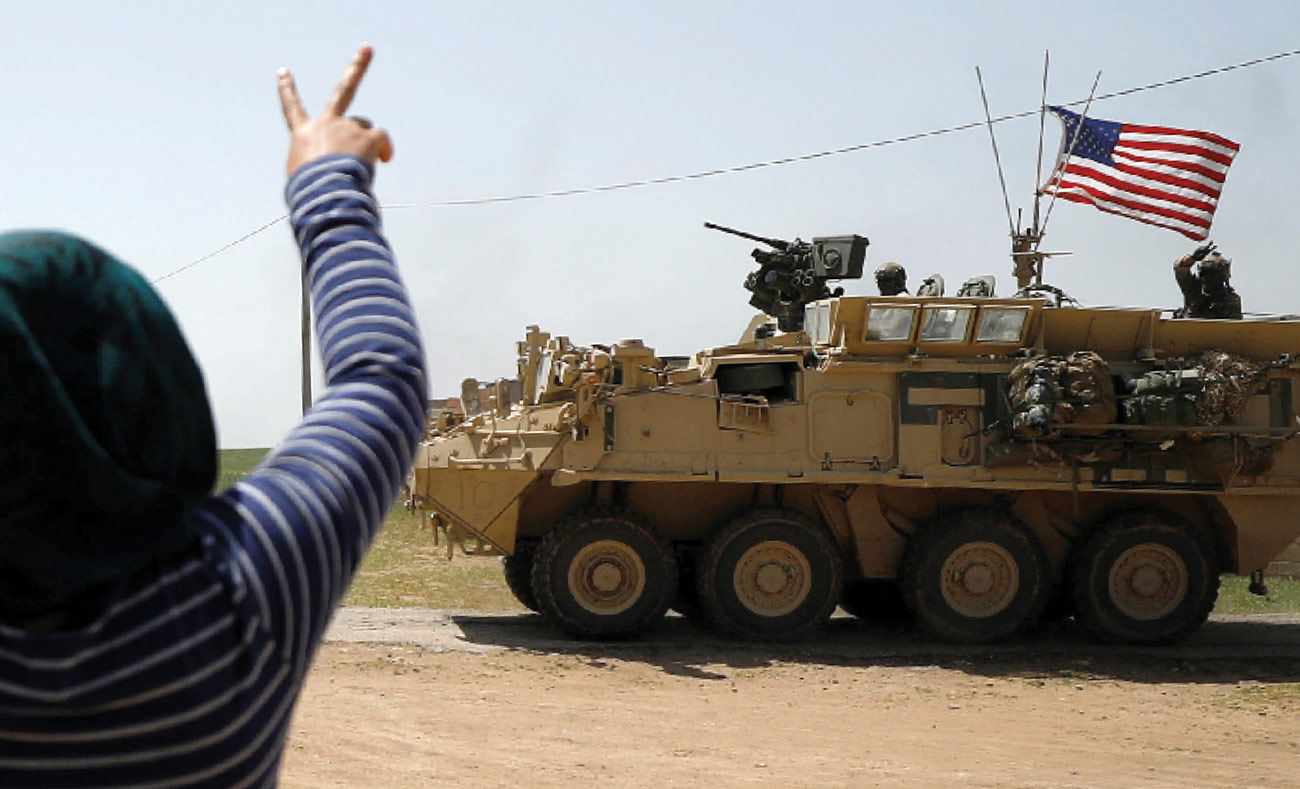
 A military vehicle in Amuda in al-Hasakah - April 2017 (Reuters)
A military vehicle in Amuda in al-Hasakah - April 2017 (Reuters)





 A
A
A
A
A
A

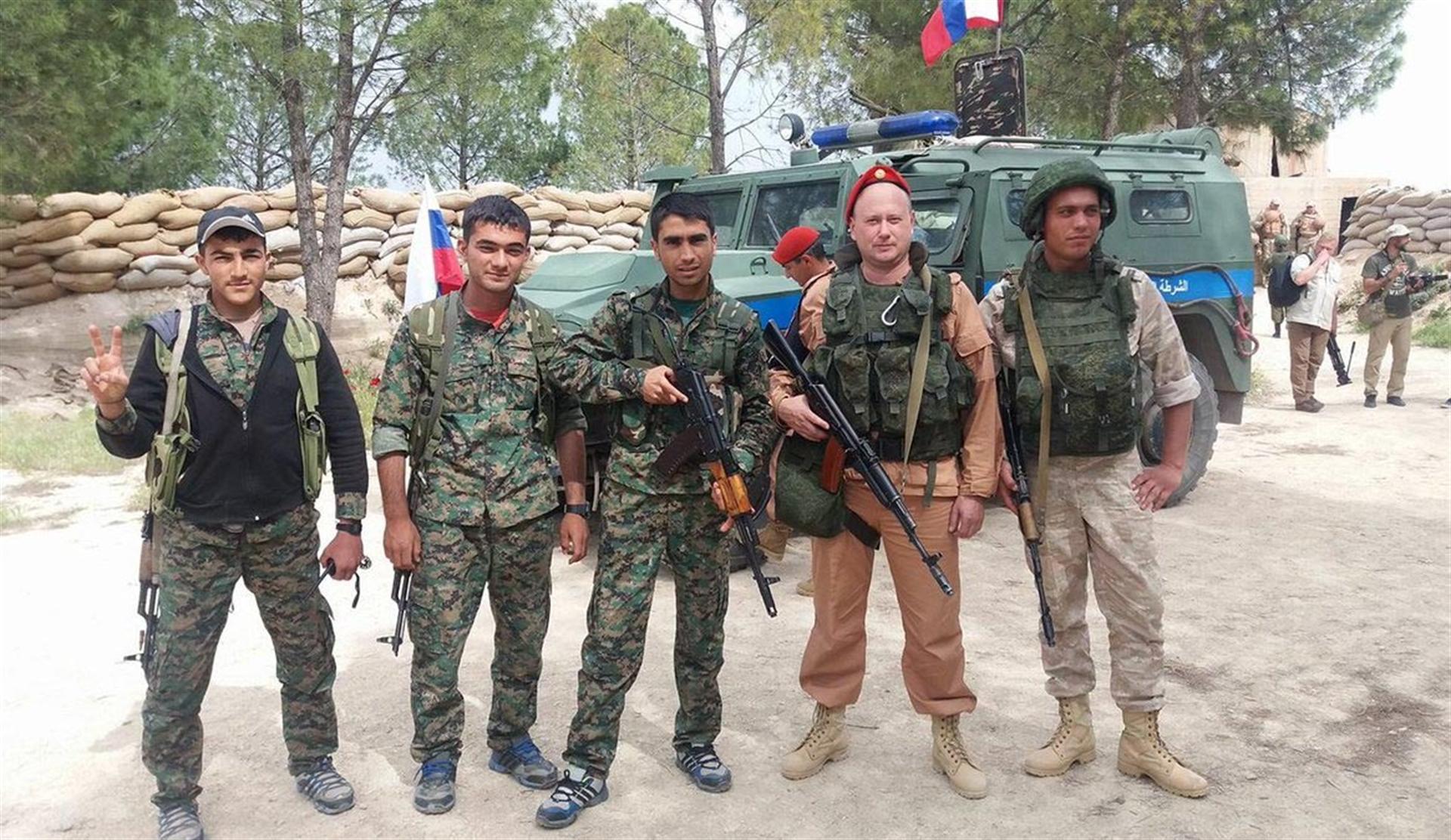




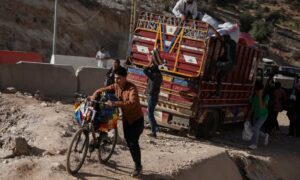
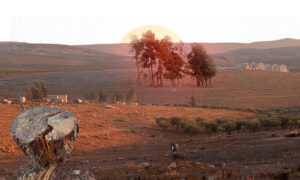
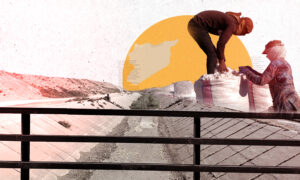
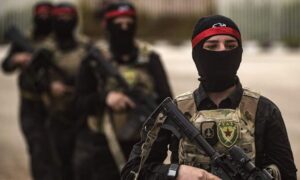
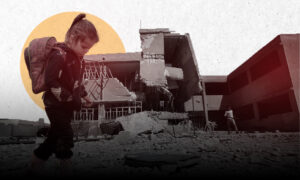
 More In-Depth
More In-Depth